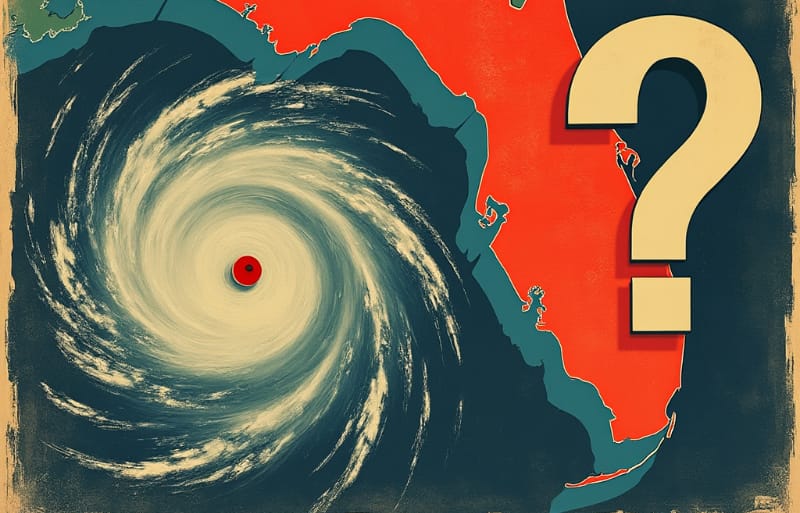Post-event cat bond pricing “quite different” with Milton compared to Ian: Icosa

Highlighting the still wide-range of uncertainty in insurance market loss estimates after hurricane Milton, catastrophe bond investment manager Icosa Investments AG has noted that the cat bond market seems not to have discounted prices as widely to account for uncertainty this time.
After hurricane Ian, the catastrophe bond market fell by roughly 10% in a sharp reaction to the potential for losses and great uncertainty over how impactful that storm event might have been.
In the end the market recovered the vast majority of that decline, with actual losses only a relatively small amount by comparison to the initial mark-to-market hit.
This time, as we’ve also been reporting, the range in industry losses for hurricane Milton is wide still.
But last Friday, when the catastrophe bond market was marked after Milton’s landfall, the main index tracking the sector only fell by 1.34%.
This morning we reported that the average decline across UCITS cat bond funds we’d seen that had reported their NAVs after Milton was only 0.77%.
In a recent LinkedIn post, Icosa Investments raises a valid question, as to whether the uncertainty associated with hurricane Milton has been priced in.
After commenting on the wide range in industry loss estimates, “What is more surprising, however, is that for some segments of the cat bond market, this lack of clarity does not seem to be well-reflected in the pricing, particularly for bonds exposed to significant attachment erosion if loss estimates shift towards the higher end. As such, the market has reacted quite differently to Milton compared to Hurricane Ian two years ago,” the cat bond fund manger wrote.
Going on to say, “After Ian, the cat bond market responded with significant discounts to account for uncertainty. These discounts ultimately proved too large. In Milton’s case, the market appears to be pricing in a “near-perfect” outcome towards the lower end of current loss estimates, not just for Milton but also for future risks like the upcoming winter storm and tornado season, to which many aggregate cat bonds remain exposed after Milton. This is due to the fact, that many aggregate indemnity cat bonds have risk periods starting and ending just before the hurricane season, so any “attachment erosion” from Hurricane Milton suffered now, will make these bonds more exposed to future events until summer 2025.”
These aggregate cat bonds are often the ones that see the highest levels of uncertainty, as well as the widest range of pricing across broker sheets too. It appears the same might be the case with Milton.
We would suggest that the uncertainty for cat bonds is not going to be as significant with Milton, as it was for Ian, due to the adjustments to reinsurance attachments and terms seen through renewals in 2023 and 2024.
But how one event can affect these aggregate cat bonds can take time to become clear, meaning how brokers price these bonds now can be critical for ensuring accurate valuations that reflect the potentially increased risk of attachment. But this is also a very tough ask when the information is scarce at an early stage after a catastrophe event.
Icosa Investments also raises the valid question of whether losses could creep in future.
The investment manager wrote, “This brings back troubling memories of Hurricane Irma in 2017. The market initially reacted with steep declines, as reflected by the -15% weekly performance in the Swiss Re Cat Bond Index, due to fears of a direct hit on Miami. However, after Irma changed course and avoided the city, the market rallied and ended the year 2017 in positive territory. Despite this relief, significant losses surfaced later, in 2018 and even into 2019, when loss creep impacted several cat bonds, causing losses for investors.”
Which is something the insurance-linked securities (ILS) industry will be watching closely for this time, especially for Florida bonds, as greater clarity emerges over time when loss reports from sponsors begin to be available to analyse.
Ultimately, uncertainty in the industry loss estimates and the still relatively wide range announced so far does mean some uncertainty will persist in cat bond pricing over the coming weeks and months.
Icosa Investments is right to highlight that this uncertainty may be highest for aggregate cat bonds, given the mark-downs so far have been lower than seen with Ian. But, time will tell on these as to how accurate the initial marks are, as well as for any future events that might occur, and it is going to be interesting to see how the cat bond pricing sheets adjust at the end of this week and in the weeks to come.
While the post-event pricing of catastrophe bond positions has certainly proved quite different this time with hurricane Milton, the industry has learned a lot since Ian and the terms of reinsurance and retrocession layers (that cat bonds occupy part of) have changed meaningfully in some cases.
Which suggests a different outcome was warranted and perhaps was to be expected at last Friday’s marking, we’d hope implying a clearer understanding of the loss potential from this most recent storm as well as a disciplined approach from those marking positions.
But the caution expressed by Icosa Investments on aggregate cat bonds and also the potential for loss creep on Florida specific bonds is equally warranted and these will be areas to watch going forwards.






